5 Steps to Increasing Your LinkedIn Message Response Rates
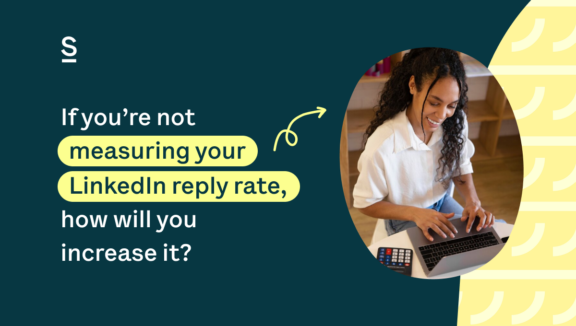
LinkedIn messaging is crucial for outreach. It’s a unique opportunity to connect with prospects in a professional yet personalized space. More direct and personal than an email, but still professional.
However, many sales professionals face the challenge of low response rates, making it tough to effectively leverage LinkedIn for business development. This article dives into practical strategies to enhance your LinkedIn message response rates, turning this challenge into an opportunity for successful sales engagements.
Key highlights
Personalizing Your Approach
Personalizing your LinkedIn messages is a necessity. The key to unlocking higher response rates lies in the genuine effort to tailor your messages to each prospect. It’s about moving beyond generic templates and creating a connection that resonates on a personal level.
Why Personalization Matters
Inboxes are flooded with generic sales pitches. Personalized messages stand out. It shows that you’ve taken the time to understand the prospect, their needs, and their business context. This not only increases the likelihood of a response but also sets the stage for a more meaningful conversation.
Insight into Successful Sales Engagements
Think back to a time when you received a message that felt like it was written just for you. It likely caught your attention and made you more inclined to respond. In fact, it’s probably difficult to remember such a message because the good ones feel like natural, regular conversations. It’s the unsuccessful ones that you ignore. The one that you take a glance at, know it wasn’t personalized, and can see immediately that it’s the start of a sales pitch. We’re going to make sure you ever send a LinkedIn message like that again.
Tips for Effective Personalization
- Research Is Key: Before you send a message, invest time in understanding the prospect’s professional background, interests, and recent LinkedIn activities. This will undoubtedly guide your approach and provide talking points that are relevant and engaging. For example, the worst sales pitches I received in the LinkedIn DMs are ones from companies offering a similar service to us. If they had done just a little research they would see that I am not the right target.
- Find Common Ground: Shared connections, alma maters, events you both attended, or mutual interests can serve as excellent conversation starters. Mentioning these in your message can create an instant rapport.
- Reflect Their Tone and Style: If the prospect has a more casual tone in their LinkedIn profile or posts, mirror that in your message. Adaptability in communication style can make the recipient more comfortable.
- Customize the Opening Line: Avoid starting with “I noticed we both…” as it’s overused. Be creative and authentic in how you establish the connection. Instead, use personalization that goes beyond their name and job title.
Incorporating these elements into your LinkedIn messages can significantly enhance the response rate, turning cold outreach into warm conversations.
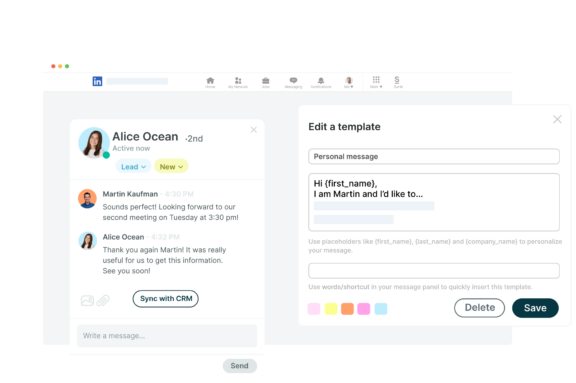
Keeping Messages Concise and Engaging
Brevity is the soul of wit, and this holds true for LinkedIn messages aimed at sales outreach. In a world where attention spans are short and time is a precious commodity, the ability to convey your message succinctly can make a significant difference in your response rates.
The Importance of Brevity
Professionals on LinkedIn are often juggling multiple tasks and responsibilities. A lengthy message can be overwhelming or overlooked in a busy schedule. Keeping your message concise shows respect for the recipient’s time and increases the chances of it being read and responded to. If the message is too long, they’ll see its length and skip it without even reading.
Crafting Compelling Messages
The goal is to strike a balance between brevity and substance. Here are some tips to keep your messages short yet impactful:
Get Straight to the Point: Avoid lengthy introductions. Start with a clear and compelling reason for your message.
Focus on Key Information: Highlight the most relevant information or question. Avoid unnecessary details or fluff.
Use Bullet Points: If you need to convey multiple points, bullet points can make your message more skimmable and easier to digest.
Avoiding Premature Calls to Action
It’s tempting to include a meeting link or a call to action in your initial message, but this can come off as too forward or salesy. Instead, focus on initiating a dialogue. You can always suggest a meeting in subsequent messages once a connection has been established. A good alternative is to ask a question.
Examples of Effective Messages:
- The Direct Approach: “Hi #firstname, I noticed #currentcompany is expanding. I have some insights on [specific challenge] that might be of interest. Could they be useful if I send them over to you?”
- The Question Hook: “Hello #firstname, I saw your recent post on [topic]. It got me thinking about [related question]. Is that something you’re keeping in mind as a #currentposition during your day-to-day?”
Remember, the key to effective LinkedIn messaging for sales is not just what you say, but how you say it. A concise, well-crafted message can open doors to new conversations and opportunities, setting the stage for successful sales interactions.
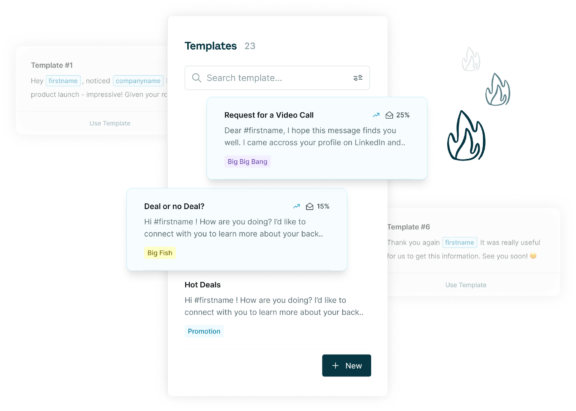
Start using variables now
Surfe allows you to insert message templates with one click. Personalized variables are automatically customized based on your contact’s info!
Providing Value from the First Message
The opening message on LinkedIn can set the tone for the entire sales conversation. It’s about immediately providing value to your prospect. This approach, often termed as ‘giving before asking,’ can significantly enhance the chances of a positive response and lay the groundwork for a fruitful relationship.
The Essence of Providing Value
Value, in the context of a LinkedIn message, isn’t just about what you sell. It’s about what the prospect gains from interacting with you. This could be insights into industry trends, solutions to pain points, or connections to other industry professionals. The objective is to make your prospect feel that responding to your message will be beneficial to them.
How to Offer Value in Your Message
Industry Insights: Share a relevant piece of information or a recent study that might be of interest to your prospect.
Personalized Advice: Offer a tip or a piece of advice tailored to the prospect’s current role or business challenge.
Resource Sharing: If you come across an article, a webinar, or a tool that aligns with your prospect’s interests, mention it in your message.
The Art of Asking a Hook Question
Engaging your prospect with a question in the first message can be a powerful way to initiate a conversation. The question should be open-ended and relevant to the prospect’s interests or challenges. It encourages them to engage in a discussion, rather than just responding to a statement.
Examples of Value-Driven Opening Messages
- “Hi #firstname, I just read an article about the challenge of [pain point] in [industry/prospect’s field] and thought of you. Have you encountered similar challenges in your role? I’m wondering what you’re doing to confront that?”
- “Hey #firstname, I’ve just been down a rabbit hole of tools to help with [pain point] and I was wondering if you’re currently using any similar tools to help you with it? The best I found was this one. Have you used it?”
Incorporating value from the onset demonstrates that you’re not just another salesperson trying to push a product, but a professional offering meaningful insights, solutions, and conversations. This approach can significantly increase your message response rates, paving the way for deeper engagement and potential sales opportunities.
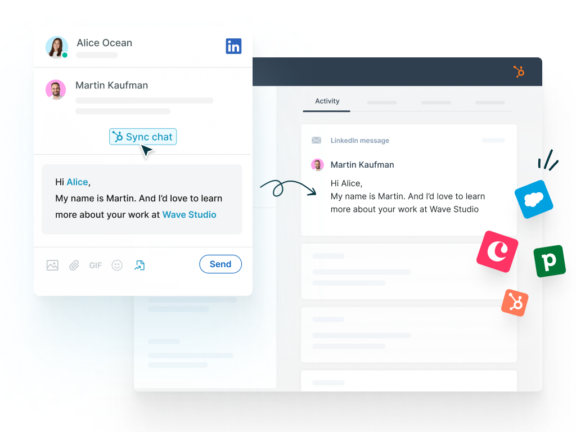
The Art of the Follow-Up
Mastering follow-up messages on LinkedIn is an art that can significantly boost your sales effectiveness. Timely and appropriate follow-ups show your genuine interest in the prospect’s needs and keep the conversation alive. This stage is crucial as it can transform a preliminary interaction into a meaningful business relationship.
Timing and Tone in Follow-Ups:
Striking at the Right Time: The timing of your follow-up is critical. Wait long enough to give the prospect time to respond, but not so long that the initial conversation loses its relevance. A general rule of thumb is to follow up 2-3 days after your initial message.
Maintaining a Respectful Tone: Your follow-up should be respectful and considerate of the prospect’s time. Avoid sounding desperate or pushy. Instead, aim to reinforce the value you can bring to them.
Crafting the Follow-Up Message:
Recap the Initial Message: Briefly remind the prospect of your initial conversation to jog their memory.
Add Additional Value: Share something new, whether it’s a relevant insight, a helpful resource, or an interesting industry update. Just asking, “Did you get a chance to check that out?” isn’t going to get a reply.
Keep It Open-Ended: Ask a question or make a statement that invites further discussion, but avoid hard sells or immediate calls to action. If they can answer “yes” or “no” then it’s the wrong question for a follow-up.
Example of an Effective Follow-Up:
“Hi #firstname, Just circling back to our discussion about [pain point] – I’ve just come across [new resource or information] that might interest you. What are your thoughts on this?”
The Balance of Persistence and Respect:
Avoid Over-Following Up: While persistence is key, bombarding your prospect with messages can be counterproductive. If you don’t receive a response after a couple of follow-ups, it’s usually best to move on and focus your efforts elsewhere. Desperation is never a good look.
End on a Positive Note: If you decide to stop following up, end your communication on a positive and open-ended note, leaving the door open for future interaction.
Effective follow-ups are about nurturing the relationship, not just chasing a sale. They should reinforce the value you bring and show that you’re invested in addressing the prospect’s needs and challenges. This approach can significantly increase your chances of getting a response and moving the sales conversation forward.
Avoiding Common Pitfalls
Navigating LinkedIn messaging for sales outreach involves steering clear of certain common mistakes. Recognizing and avoiding these pitfalls can greatly enhance your message response rates. Here’s a rundown of key things to sidestep in your LinkedIn messages:
Over-Formality: LinkedIn is a professional platform, but that doesn’t mean your messages should be stiff or overly formal. A conversational tone is more likely to engage prospects and make them feel comfortable. Avoid language that’s too corporate or jargon-heavy.
Being Too Pushy for Quick Wins: Patience is a virtue in sales, particularly on LinkedIn. Pushing too hard for a sale, a meeting, or a response can be off-putting. Instead, focus on gradually building a relationship and understanding the prospect’s needs.
One-Size-Fits-All Messaging: Generic messages are easy to spot and often ignored. Tailor your communication to each individual, showing that you’ve done your homework and genuinely understand their challenges and interests.
Neglecting the Prospect’s Time: Be mindful of the recipient’s time. Bombarding them with messages or sending lengthy texts shows a lack of consideration. Keep your messages succinct and value-packed.
Ignoring Profile and Activity Cues: A prospect’s LinkedIn profile and activities can offer valuable insights into their interests and pain points. Ignoring these cues and sending irrelevant messages can lead to lower response rates.
Lack of Personalization: As mentioned earlier, personalization is key. Failing to personalize your messages makes them less effective and can diminish the prospect’s interest in engaging with you.
Failure to Follow-Up Appropriately: While follow-up is crucial, it’s important to do it right. Inappropriate or untimely follow-ups can hurt your chances of getting a response.
Overlooking the Importance of Adding Value: Every single message should offer something of value to the prospect. If it’s not offering them value, just don’t bother sending it. Rewrite it and try again.
Using Too Much Jargon: Industry jargon can make your message hard to understand or irrelevant to the recipient. Use clear and simple language that’s easy to comprehend.
Remember, the goal of your LinkedIn outreach should be to build relationships, not just to make sales. Avoiding these common pitfalls can help you create more meaningful connections and, ultimately, achieve better sales results.
Bonus: Use a Free Tool to Measure your Response Rate
We now know how to write the best messages most likely to receive a high response rate, but how are you actually measuring the response rate?
Surfe provide the perfect solution and it’s available to try for free. Their LinkedIn Message Templates feature allows you to send a message to your LinkedIn contacts in one-click. The message is personalized with variables so that #firstname, #lastname, #currentposition, and #companyname are automatically replaced with the contact’s details.
You can have different templates for different scenarios or contacts. One for new connections, one for event invites, one for follow-ups, etc. Surfe then provides you with a response rate for each template. It’s an easy way to spot if a particular response rate is performing well.
How to use Surfe to increase your response rate
Knowing the response rate for your templates is crucial. It allows you to A/B test your different templates against each other and gradually increase your response rate over time.
Test different tones of voice against each other. If you’re testing out an intro message, make one formal template and one more informal one. Send a bunch of each and, after a while, check which one has the highest response rate. You’ll have some pretty reliable data on whether your usual contacts respond better to formal or informal language.
You can do the same with a whole bunch of different factors. Test including a meeting request link against a template without links. Test templates that ask open ended questions against more basic ‘yes’ or ‘no’ questions. Test the shorter messages against longer ones.
Over time, you’ll start to see trends and you’ll be able to gradually increase the response rate by each factor until the change is significant. In the end, you’ll have a response rate you can rely on and you’ll be impressing the whole team.
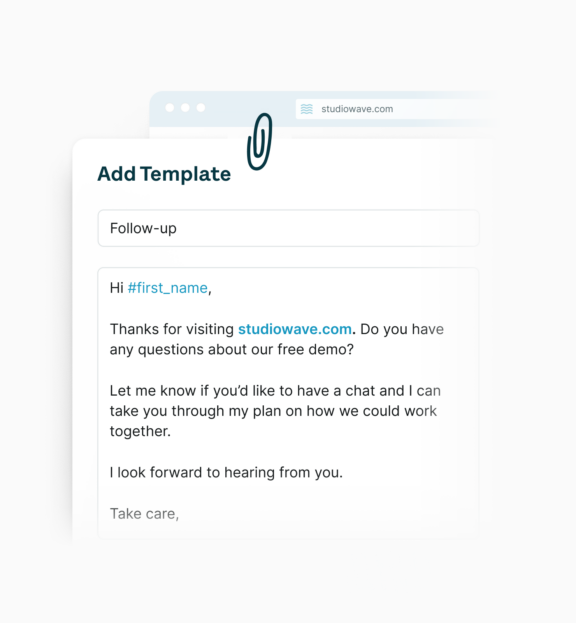
Increase your response rate with Surfe
Send templates at the click of a button while measuring and increasing response rates. What’s not to love?
Let’s wrap it up!
Increasing your LinkedIn message response rates in sales is about striking the right balance in your outreach strategy. It involves personalizing your approach, crafting concise and engaging messages, providing value from the get-go, mastering the art of follow-up, and avoiding common pitfalls.
Implementing these strategies requires effort and patience, but the rewards are substantial. I encourage you to apply these tips in your sales outreach and share your experiences. Remember, each message is an opportunity to build a meaningful connection that could lead to a successful business relationship.


